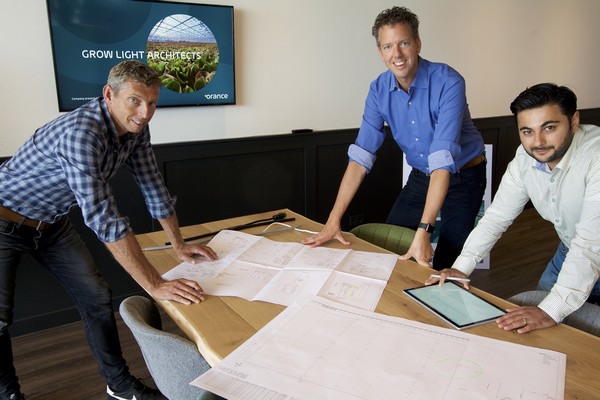The current lighting market is still very product driven. Understandably, given the number of product suppliers of luminaires who all want to profile and position themselves in the market. The extreme increase, especially of LED products, is in itself good for the end customer, because it stimulates renewal and innovation.
Developments are taking place at lightning speed and companies are succeeding each other in rapid succession with the introduction of new luminaires. But it also creates confusion, the Orance team notes. “Growers and investors no longer see the forest for the trees. According to us there is no independent system approach.”
The latter is currently still quite uncommon in greenhouse horticulture, they conclude at the independent consultancy and engineering agency for horticultural lighting. "The lighting market is becoming increasingly fragmented, so making choices become increasingly difficult for growers and investors, who often lack sufficient specific knowledge to make well-founded choices in terms of luminaire, installation-technical and financial aspects," according to René van der Sar and Arno Wartewig of Orance.

Arno, René and Orchan
LED makes choosing even more complex
At Orance, they call themselves "Grow Light Architect", they sit at the table with the grower and/or investor to supervise a project from the very beginning and, above all, to make well-founded choices.
"The rise of LED does not help here, because that makes it all even more complex," says René. “Many non-horticultural parties can also make a LED luminaire that looks appealing, but often these luminaires are suitable for lighting in hotels or warehouses, but not in a modern horticultural environment. And all those different luminaires have different technical specifications that affect engineering and the long-term system value.”
Continue to follow developments
René, Arno and Orchan Koeleijv, who joined the team this year, have set themselves the goal of keeping up with all developments in the lighting market. Their network and experience about product, installation, procurement and service aspects in greenhouse horticulture does help. “Thanks to our independence and thus the possibility to work with all luminaire producers, we can provide real customer-specific advice,” says René.
Growers already know quite well what they want. The last thing they want to pretend at Orance is to be a "grower". “No, we certainly are not”, Arno confirms, “but we do have the knowledge and review all the specifications, brochures and different selling points, to provide an clear overview so that the grower can make the right choices. And those choices are never made only at the initial investment level.”
To exclude risks
Many of the activities can be done digitally, although an initial introductory meeting is often the most efficient face-to-face. Orchan is going to travel a lot for that, as soon as that is really possible again because of corona. “Our international customers also often lack the necessary knowledge to make good choices. By involving an independent party from the beginning, the best choices are made and mistakes are prevented.”
“It is good, right from the start, to get all the possibilities, but also any limitations, clear when it comes the on site power grid in combination with the available electrical power from the public grid,” René points out. “Limitations or wrong choices are often not immediately apparent, but will be in the future. If everything has been thought through carefully, when everything is well documented and executed, the chances of a success story are much greater, and the latter benefits everyone, both grower and supplier, and of course also us. After all, nothing is more satisfactory than a happy grower with a well-functioning and sustainable lighting installation.”
For more information:
Orance
www.orance.nl
[email protected]
